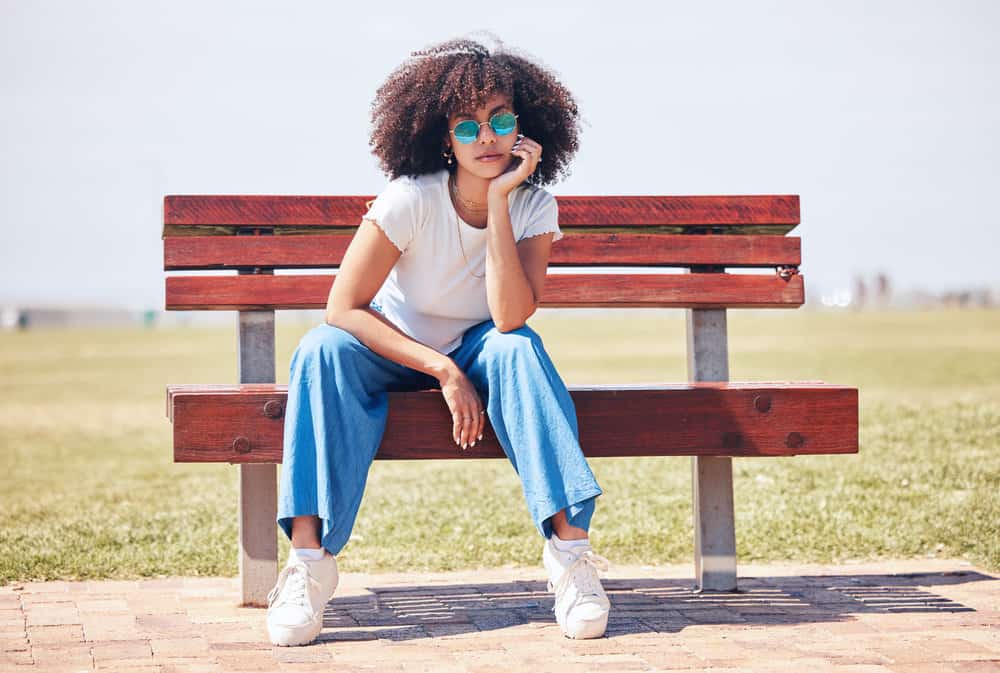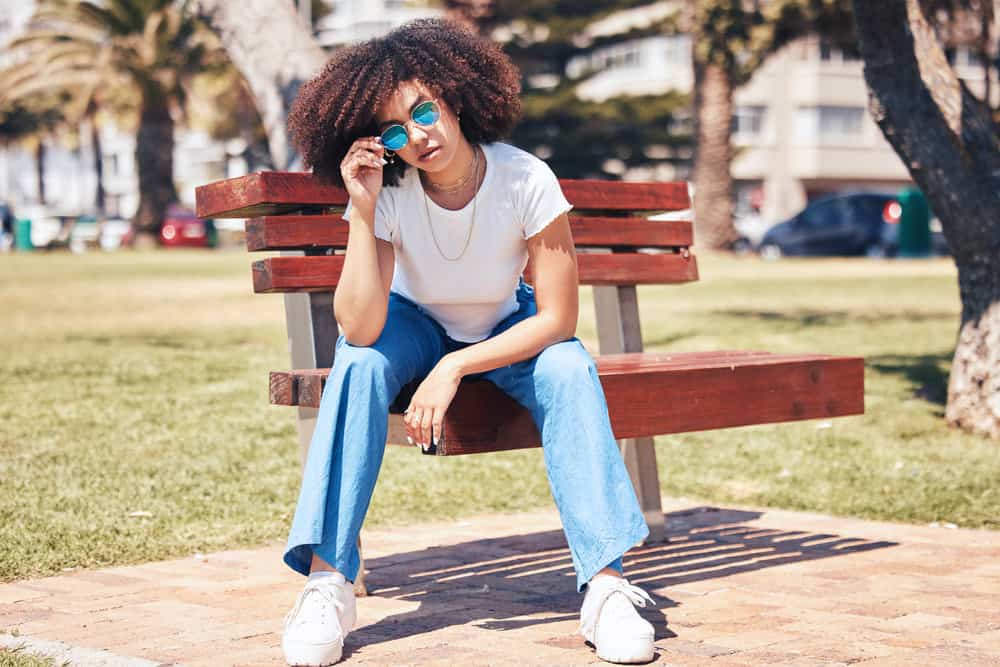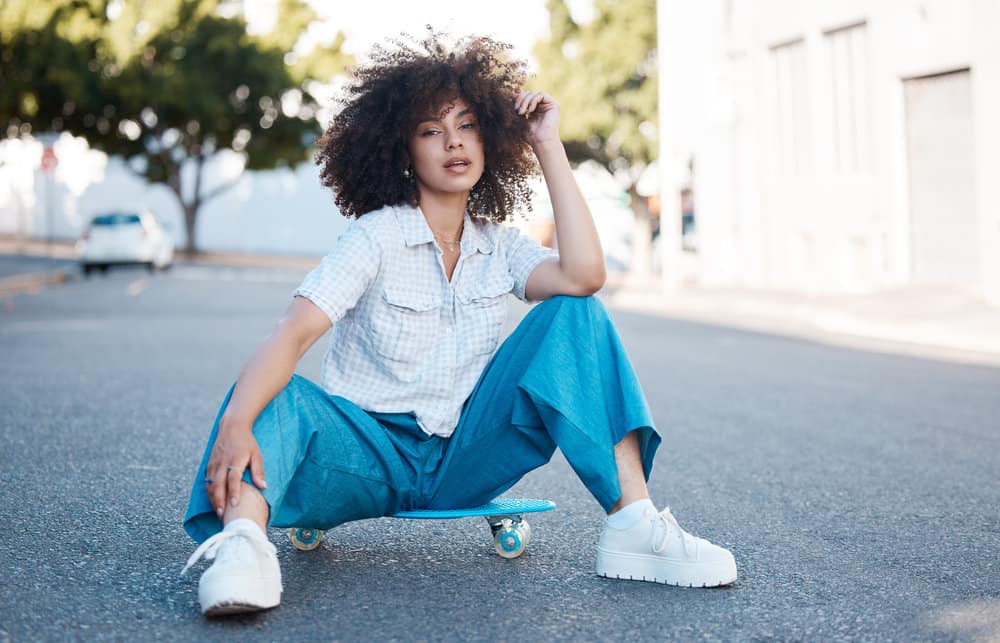
Anyone on a hair growth journey knows how nerve-wracking growing your hair out can be, because it seemingly "takes forever".
You may be tempted to check your hair every day or two to see if it has somehow grown five inches from the last time you checked. Unfortunately, when you checked frequently, you may not even notice hair growth occurring.
However, some people swear they can even feel the new growth. Is this true? Can you feel your hair grow? In this article, we'll answer this question and much more.
Table of Contents
Can You Feel Your Hair Grow?
You cannot feel hair growth. The idea that your body somehow gives off sensory signals indicating hair growth is a misconception. It is impossible to feel hair growth.
Hair growth occurs during the anagen phase of a strand’s life cycle, and all the steps involved in that process occur at the cellular level. The process unfolds on such a small scale that it is impossible for you to feel growing hair strands.
Sometimes, people take scalp itchiness and tingling to mean that their hair is growing.
Unfortunately, those scalp sensations have nothing to do with hair growth. The itching and tingling may indicate that your hair needs a wash or that you’re suffering from an underlying scalp issue such as dandruff or scalp inflammation from hair care products.

3 Real Signs of Hair Growth
If you believed the myth that you can feel hair growth, you might be disappointed.
But you don’t have to be!
You may not be able to feel your hair growing, but there are other signs of hair growth to look out for. Here are three actual signs of hair growth:
1. Baby Hair Strands
Have you experienced hair loss in a certain area of your head? If you see baby hairs in that spot (or peach fuzz), that’s a clear sign that your hair loss has been reversed.
Newly sprouted baby hairs (or hair regrowth) may be visible before thicker, longer hairs grow in their place. Note: This new "baby hair" can be delicate, so it's important to treat it with care.

2. Loosening Protective Styles
Ever wonder why your protective style loosens over time? It’s hair growth! Consider a style like box braids – when you get them done, all of your existing hair is braided in with the braiding hair.
But as your hair grows, the new growth creates space between your scalp and the beginning of the braiding hair, giving way to that looseness we mentioned before.
So, if your braids or cornrows started to become loose after a few weeks, that's often an indication that your hair is growing.
Note: Loosening protective styles is not only an indication of hair growth. This loosening could also mean that your extension hair is slipping out. Click here to read more about how to use protective hairstyles to make your hair grow faster and longer.

3. Increased Length
The most reliable way to tell if your hair is growing is by tracking its length over time. When the hair grows, its length will increase by about half an inch per month.
To determine if your hair has grown, measure a few sections of hair every month or a few times a year and note whether there’s been any change. Measure the same few sections each time to get accurate measurements.

6 Ways to Increase Hair Growth and Length Retention
To increase your hair growth and length retention, you’ll need to make targeted changes to your hair routine and habits in general. Here are six tried and tested ways to do just that.
1. Consume Foods with Hair-Healthy Nutrients
You may not have been aware, but your diet directly contributes to your hair’s growth rate. The food you eat breaks down into essential nutrients, some of which will reach the hair and scalp.
The hair needs nutrients like protein, biotin, and other vitamins to grow, and the best way to get them is from your diet.
It is vital to consume foods like fish, meat, eggs, leafy greens, and fruits because most contain proteins, fatty acids, iron, biotin, and vitamins D, E, and A. All of these help facilitate a healthy hair growth cycle.

2. Do Regular Scalp Massages
Scalp massages increase blood flow and essential nutrients to the scalp and hair.
These nutrients stimulate the hair growth process. If you’ve been experiencing slowed hair growth and begin to implement scalp massages you may notice an increase in hair growth over time.
As a bonus, scalp massages are also super relaxing and easy.
Just use the tips of your fingers or a scalp massager to massage your entire scalp in a circular motion at least twice a week. It only takes 10-15 minutes to complete a massage and reap the benefits.
3. Moisturize Your Hair with Oil
Another great way to increase hair growth is to incorporate hair oils into your regimen. Most oils contain vital nutrients and fatty acids that facilitate hair growth and add to the overall strength and health of the hair.
Oils like castor oil, amla oil, coconut oil, pumpkin seed oil, argan oil, rosemary oil, and lavender oil add to the shine of hair and promote new hair growth.
You can reap the benefits by choosing an oil and applying it to your damp hair at least twice a week.

4. Seal in the Moisture
Textured hair is naturally prone to dryness. This is unfortunate since extremely dry hair is the enemy of hair growth, often leading to breakage, split ends, hair loss, and the inability to retain length.
Therefore, it is critical to ensure the hair is adequately moisturized.
That way, it’ll have a fighting chance to beat dryness and grow healthily despite the odds. To keep your curls hydrated, you need some good moisturizing products in your hair stash.
An effective method of moisturizing textured hair involves using a spray leave-in conditioner, a moisturizing oil, and a sealing cream or hair butter.
Many curly, coily, and kinky-haired folks use all three products in a moisture-layering routine known as the LOC method.
It’s a process where you first apply a liquid like water or leave-in conditioner to the hair and then follow up with an oil and then a cream to seal in all the hydration.

5. Protective Styling
Hair thrives when it’s left alone. Under constant strain and manipulation, your hair will dry out and eventually break. This is why protective styling is widely used as a hair growth remedy.
When you put your hair in a protective style like braids, twists, or Bantu knots, your strands are tucked in and protected from the outside elements and manipulation.
This protection reduces the possibility of damage and allows you to retain more length. If you're not a fan of protective styles, low manipulation styles also help to maintain length. These styles include wash-n-gos, twist-outs, and buns.
Here are a few of our favorite protective hairstyles:
- Bantu Knots How to Guide
- Janet Jackson Poetic Justice Braids
- How to Do Twist Braids
- How to Do Spring Twist

6. Incorporating Silk/Satin Bonnets into Your Nighttime Routine
By covering your hair with a silk or satin bonnet before going to bed, you can avoid excess breakage caused by your hair rubbing against your cotton sheets and pillowcases.
In the long term, this will lead to reduced breakage and increased length retention, ultimately resulting in an increase in hair growth. If you’re not into bonnets, you can try a silk or satin scarf or pillowcase.
- If Your Hair Grows Fast What Does It Mean
- Does Uneven Hair Catch Up?
- How to Grow Your Natural Hair
- Why Does My Hair Grow Slowly?
As you can see, there are so many things you can do to encourage hair growth and protect your strands from hair loss. The main thing to remember is that while hair growth is gradual, it will happen if your hair is well cared for.
Still, you won’t be able to feel the process happening. So, if you find yourself overanalyzing and attributing any sensation you feel on your scalp to hair growth, resist the urge to do so.
Instead, you can put your energy toward fine-tuning your hair care routine using the information we’ve presented in this article. Good luck!




